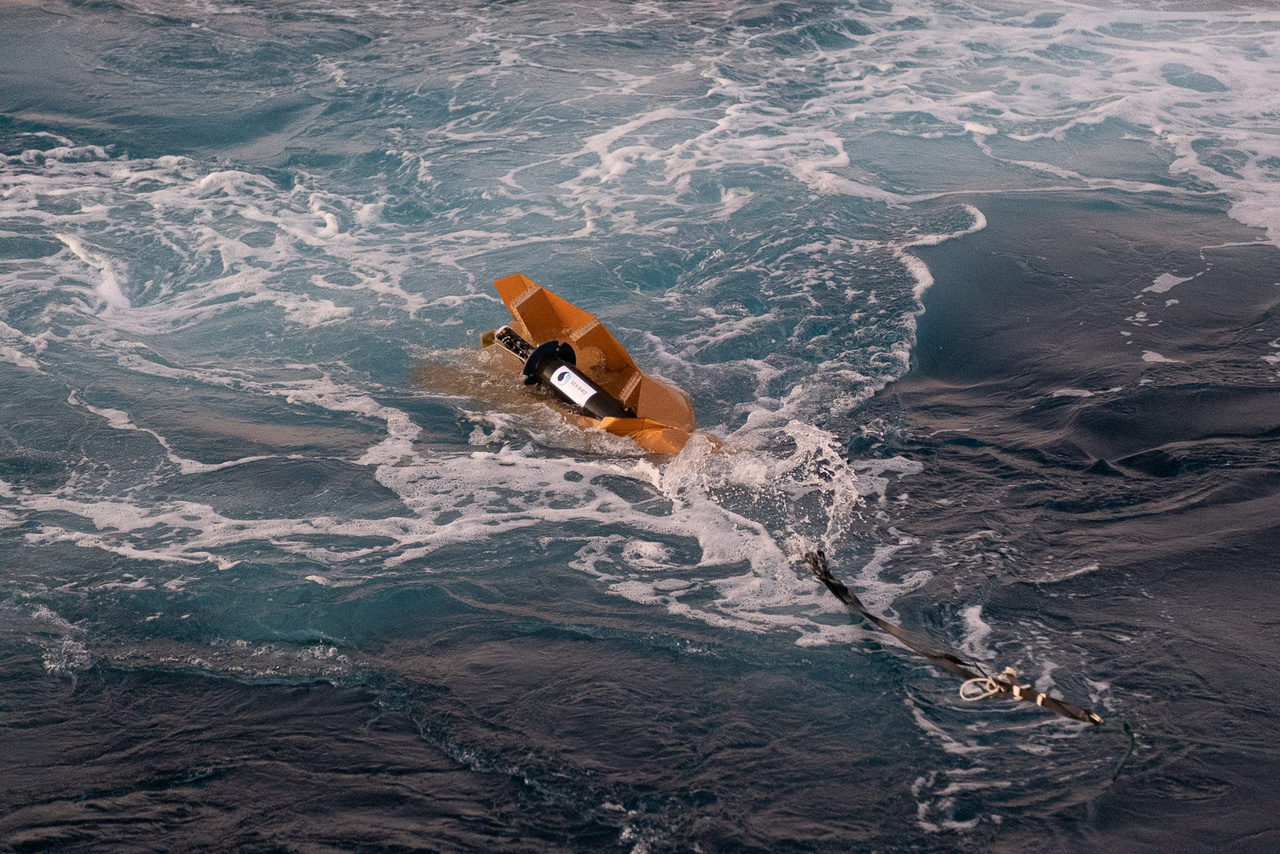We’ve just recovered the first Biogeochemical Argo floats we deployed 4 years ago.
Four years ago the IMOS Biogeochemical Argo sub-Facility deployed its first two floats together off Brisbane.
The floats have been drifting south in the East Australian Current (EAC) since October 2019, with each float taking a very different trajectory as they were carried in eddies of the EAC. That was until recently when the floats came back together again and were recovered off the east coast of Tasmania in late April.
Fisherman Ren Bell led the remarkable recoveries ~100 miles offshore, spotting the tiny top 20 cm portion of the floats that protrudes into the atmosphere as he followed their drifting paths using positions sent by satellite every 15 minutes.
During their four years at sea each has completed ~150 profiles of the biogeochemical properties of the top 2 km of the ocean.
Biogeochemical Argo floats are profiling floats that, in addition to temperature and salinity, carry sensors to measure any combination of dissolved oxygen, pH, dissolved nitrate, chlorophyll fluorescence, particulate backscatter and incoming solar radiation. These measurements are used to address science questions regarding variability in the oceans’ biological carbon pump, the uptake of anthropogenic CO2 by the ocean, deoxygenation and acidification, marine resource management and validation of satellite observations.
This is a special achievement for the IMOS Biogeochemical Argo sub-Facility in many ways. It allows the examination of sensor drifts, and we can re-deploy the floats to continue to monitor the changing conditions in Australia’s regional seas.
The retrieval also coincides with the transition in the co- leadership of the Biogeochemical Argo sub-Facility from Tom Trull (with Peter Strutton) who arranged the original deployments to Christina Schallenberg who oversaw the recoveries. IMOS Biogeochemical Argo is more than ready for future ocean observations!
The IMOS Biogeochemical Argo sub-Facility is operated by our partners CSIRO and the University of Tasmania/Institute for Marine and Antarctic Studies.
